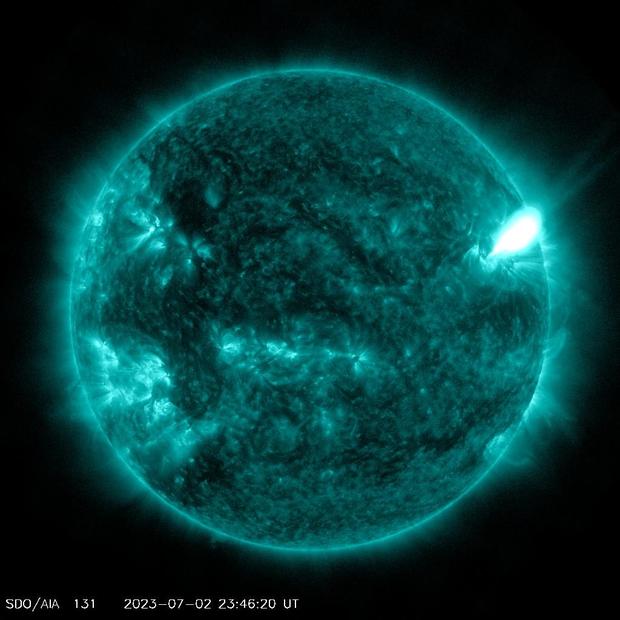Sun unleashes powerful solar flare strong enough to cause radio blackouts on Earth
The sun emitted a solar flare this week that was strong enough to cause radio blackouts on Earth — and it reportedly did.
NASA's Solar Dynamics Observatory captured an image of the event, which showed a bright flash in the top right area of the sun. The flare was classified as a X1.0 flare, which means it is in the most intense class of flares, according to the agency.
The flare peaked at 7:14 p.m. Eastern Time on July 2, NASA said. It erupted from a sunspot that is seven times the width of Earth, according to Space.com, a website that chronicles news and events in space.
Such flares disrupt radio signals, resulting in radio blackouts, according to the National Oceanic and Atmospheric Administration's Space Weather Prediction Center. Spaceweather.com reported that radiation from the flare ionized the top of Earth's atmosphere, resulting in a "deep shortwave radio blackout over western parts of the U.S. and the Pacific Ocean." The blackout lasted about 30 minutes.
NOAA classifies radio blackouts using a five-level scale ranging from "minor" to "extreme." X-class flares can cause either "strong" or "severe" disruptions.
Solar flares are formed when magnetic fields around sunspots become tangled, break and then reconnect, Space.com said. In some cases, like with this flare, plumes of plasma can also be part of the process.
Solar activity like these flares has increased in recent months. As CBS News previously reported, the sun has been in Solar Cycle 25 since 2019. At the beginning of the cycle, which lasts 11 years, the National Weather Service predicted peak sunspot activity would occur in 2025, with the overall activity of the cycle being "fairly weak." However, in June 2023, researchers said they found the cycle had "ramped up much faster" than originally predicted, with "more sunspots and eruptions than experts had forecast."
It's possible that solar flares could continue to have an impact on radio and internet communications, and satellite and radio navigation systems can be disrupted.
